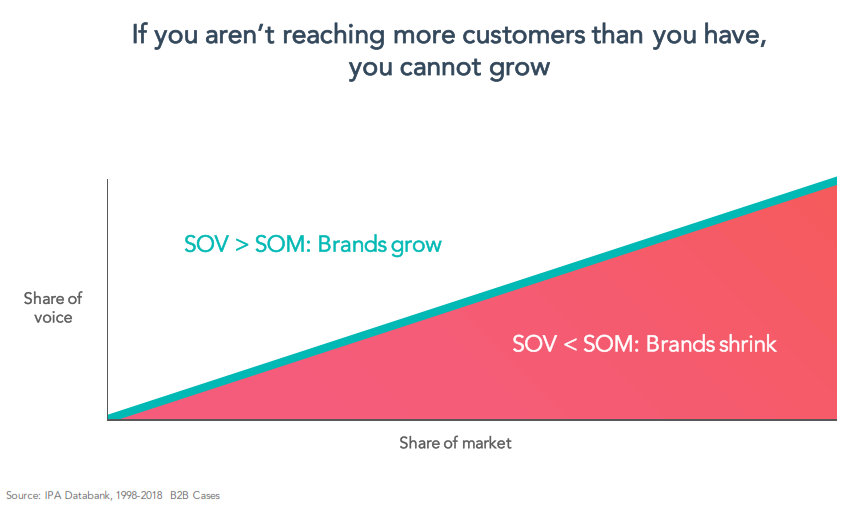 It's that time again – apple picking, leaf-peeping, and everything is laced with pumpkin and spice. Oh, and it's time to plan next year's marketing strategy, tactics, and budget. As marketers, we are always looking for more budget. I am a big fan of using the marketing flywheel methodology as a foundation for your plan and it can help you get more budget. Here's why.
It's that time again – apple picking, leaf-peeping, and everything is laced with pumpkin and spice. Oh, and it's time to plan next year's marketing strategy, tactics, and budget. As marketers, we are always looking for more budget. I am a big fan of using the marketing flywheel methodology as a foundation for your plan and it can help you get more budget. Here's why.
Flywheels as a business strategy have been very successful. Just look at Amazon. Amazon's entire business has been based on a customer-centric flywheel strategy. I have written about this extensively, most notably in this article, Two Exceptional Marketing Strategies That Produce Killer Results—featured in Forbes and this blog post, The Number One Reason Why You Need a Marketing Flywheel.
A flywheel is an incredibly heavy wheel that takes massive effort to push. Keep pushing, and the flywheel builds momentum. Keep pushing, and eventually, it starts to turn itself and generate its own momentum. Successful marketing programs work in the same way. It takes a significant effort to get them going but once they are up and running, they take on a life of their own.
When applied to a marketing program, the result of a marketing flywheel is a surround sound effect that attracts customers to you.
Marketing Plans Need Three Essential Flywheels
- The Growth Flywheel provides an overview of your strategic initiatives and what they are expected to achieve in the coming year.
- The Brand Awareness Flywheel coordinates all your brand tactics.
- The Lead Generation Flywheel synchronizes demand gen activities.
So why do you need three flywheels?
Each set of activities focuses on different time horizons and different goals. Brand activities build your company's presence and market share. Take a look at the chart below. Research shows that your brand isn't growing if your Share of Voice is not greater than your Share of the Market. This is a fundamental concept that is not well understood. Your revenue can still grow if you are upselling into existing customers, but your brand could be shrinking at the same time if your revenue is not keeping up with market growth.
The Growth Flywheel
The Growth Flywheel is an overview of what your programs are expected to achieve during the year. Each flywheel arm represents a strategic initiative that contributes to the growth of the company. The three pillars of any marketing plan are brand awareness, demand generation, and customer retention. In this flywheel, I have added data and customer experience as additional programs. Here is why.
- Without data, you cannot measure marketing's contribution to the bottom line. This initiative includes capturing, analyzing, and reporting data and building the infrastructure that supports that.
- The quality of the customer experience is paramount. If the customer's experience is negative, they won't buy your product. It won't matter if you have the best product or the most creative programs,
Data feed awareness programs and show you where to target. Awareness programs feed lead generation because they shorten the sales cycle. Lead programs are typically the first experience customers have to engage with your firm, leading to customers and retention. The information captured during the buying journey is fed back into the data, and the cycle continues,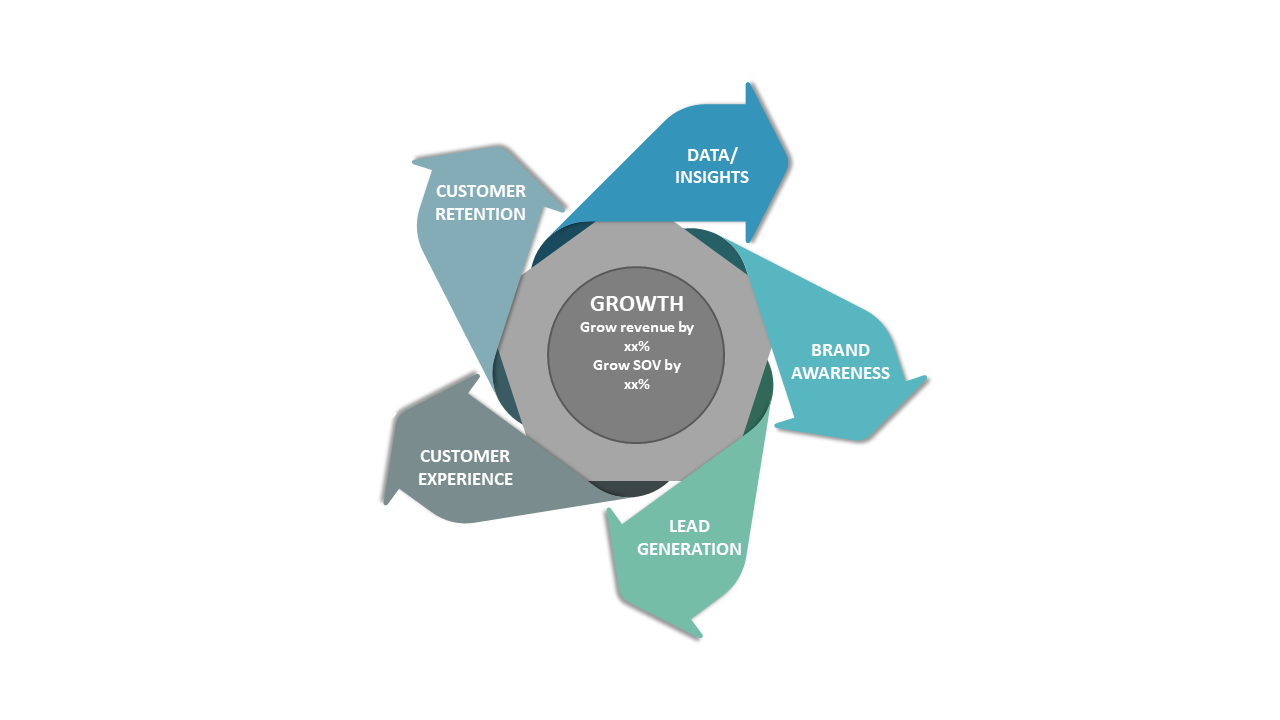
Brand Awareness Flywheel
The Brand Awareness Flywheel targets future buyers, whereas the Lead Generation Flywheel is targeted at today's buyers. Brand awareness activities have an eighteen-month horizon and are targeted at future buyers. Take a look at the chart below.
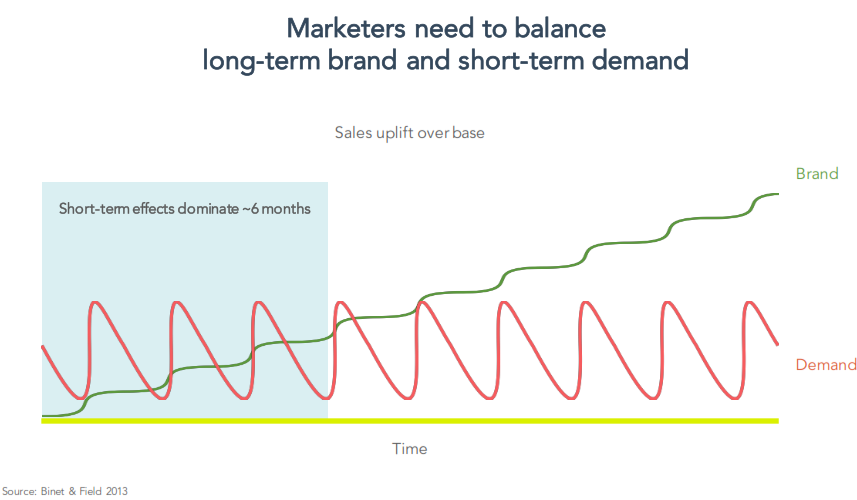
Brand awareness begins with a vision of how something is going to change. This insight is called thought leadership. Thought leadership is brought to the market through a variety of stories that educate potential buyers and investors. These stories are disseminated in various ways through earned media, social media, your website, and blog content, and advertising.
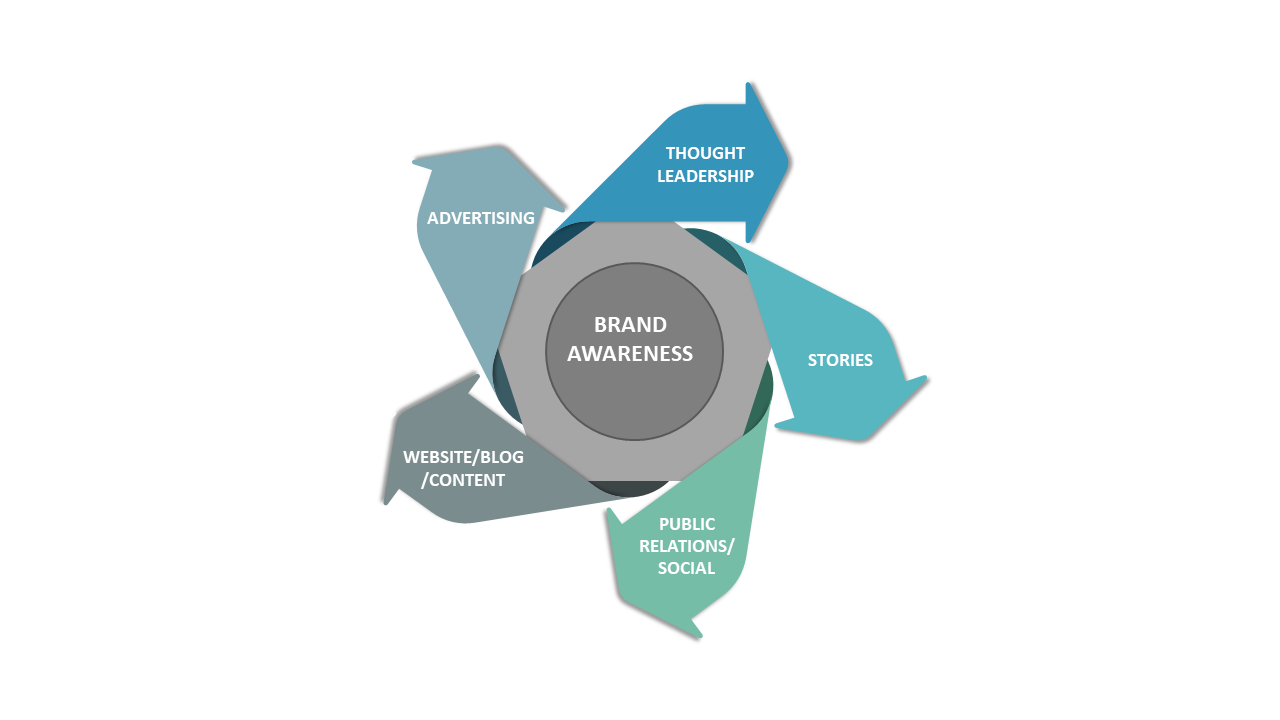
Lead Generation Flywheel
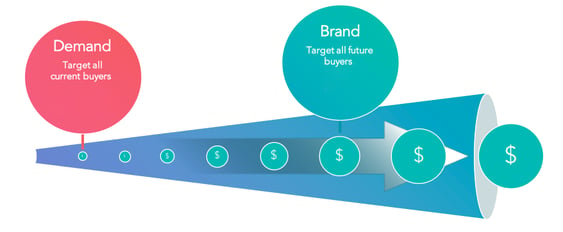
The Lead Generation Flywheel is focused on producing short term revenue. It helps marketing align directly with sales. These includes activities that help prospects choose your products over a competitive offering. Middle-of-the-funnel content illustrates how customers use your products, why they chose you and not a competitor, and highlight your differentiators. MOF is used as call-to-actions in emails, and newsletters, sent to segmented lists with interest in your solutions in an automated manner to move them closer to a sale.
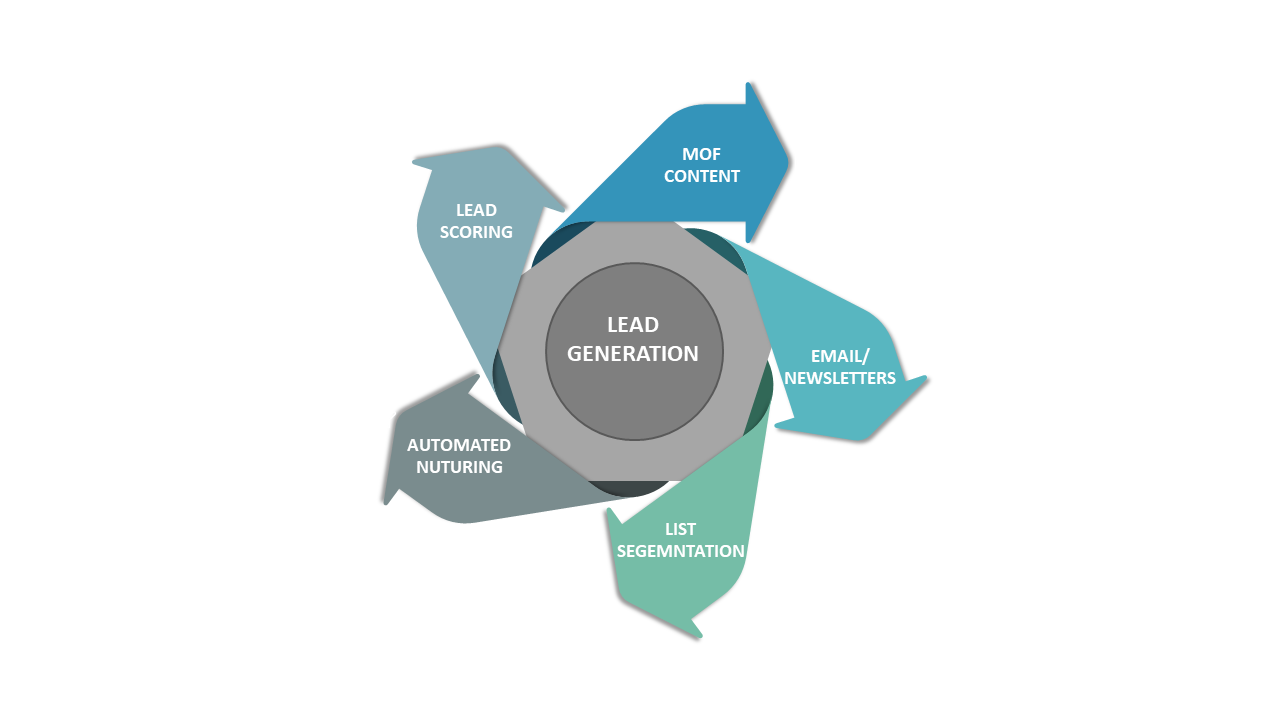
How does the flywheel help marketers get more budget?
- A series of flywheels give marketers a cohesive way to communicate all of the needed tactics to reach their KPIs. It is not uncommon for the C-suite, sales teams, and other stakeholders to have preconceived ideas and, in many cases, mistaken ideas of what marketing is and what it takes to achieve the goals.
- The Marketing Flywheel methodology provides context for all marketing activities. It helps your audience distinguish between a branding activity versus a lead generation activity and understand how the team is supporting every step of the buying journey.
- It helps marketing teams create a fully integrated program because each arm of each flywheel requires a detailed plan. It forces strong ROI because assets can be reused and leveraged for other activities in the flywheel.
- It aligns marketing with sales.
- It aligns marketing teams with each other.,
You are more likely to be funded if you are able to clearly articulate your plan and demonstrate how your program aligns marketing teams as well as to sales.

